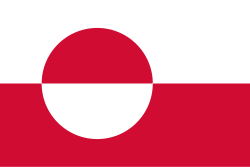Greenland's Melting Ice Reveals Rare Earth Riches Amid Geopolitical Tensions
 Greenland
GreenlandIn recent years, the painful historical relationship between Denmark and Greenland has gained renewed attention. This scrutiny follows disturbing revelations regarding how Danish authorities forcibly removed Inuit children from their families in the 1950s and implemented deceptive reproductive health measures on women in the 1960s and 1970s.
Approximately 20 Inuit children were taken from their homes and sent to Denmark, ostensibly for education and integration. Upon their return, many had forgotten their native language and were placed in orphanages for further re-education, often leading to hardship and social dislocation.
In addition, during a population control initiative, Inuit women and girls were fitted with intrauterine devices (IUDs) without consent or understanding. This practice, known as the “Spiral Case,” targeted women as young as 12 and has led to long-term reproductive issues among many victims. A joint commission has since been established to investigate these historical grievances.
Adding complexity to this relationship, Greenland has gradually gained autonomy from Denmark, becoming a county in 1953 and acquiring further self-governing powers in 1979 and 2009. However, many Greenlanders are wary of full independence due to Denmark's substantial financial support, which is crucial for the island's social systems and infrastructure. Greenland’s Prime Minister Múte Egede has stated that there is currently no timeline for complete independence.
As discussions around Greenland's future intensify, fueled by geopolitical interests—including recent comments from former U.S. President Donald Trump about controlling the territory—local opinions remain divided. While some view these interactions as potentially liberating from Danish oversight, others express a deep-seated apprehension about falling under American control.
Efforts to reconcile the history and secure a self-determined future for Greenland are ongoing, revealing a complex landscape of aspirations, fears, and historical wounds that continue to affect the island's inhabitants.
 Greenland
Greenland Greenland
Greenland Greenland
Greenland